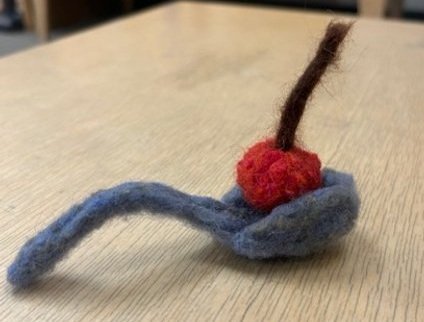written by Amanda O’Dowd, Shingobee Guide
Dr. Montessori understood the importance of handwork for children of all ages. If you stroll through our classrooms, you will see a variety of handwork happening, from diorama making, felting, knitting, beading, knot tying, and more. Children from first through sixth grade are deeply concentrated on their handwork.
Handwork is an essential part of Montessori education. Dr. Montessori wrote extensively about the connection of the hand, the heart, and the mind. She understood that hands and handwork were essential for a child’s development. Most of us are familiar with handwork at the primary level and how important it is for children to work with their hands during preschool years to develop the appropriate pincer grip and dexterity, but as children get older, handwork activities often get pushed to the side with busy schedules and a heavier emphasis on academic skills. Dr. Montessori understood that this connection between the hand and overall learning and well-being are just as important throughout the various planes of development.
The importance of handwork has multifaceted benefits that extend beyond just skill building, impacting all parts of life and encouraging a growth mindset. Handwork allows children to use their hands to learn a new skill while also settling into deep concentration and finding calmness in their bodies. We live in a world where things are constantly moving at a faster pace, and it seems harder and harder to slow down and focus on just one task at a time, but when children are engaged in handwork, you can visibly see their bodies calm and find focus.
It is a beautiful gift to see our students use their creativity and handwork skills in their follow-on and as a way to center their beings. Handwork is not just a set of skills but a holistic educational tool that enriches our students' overall education.



